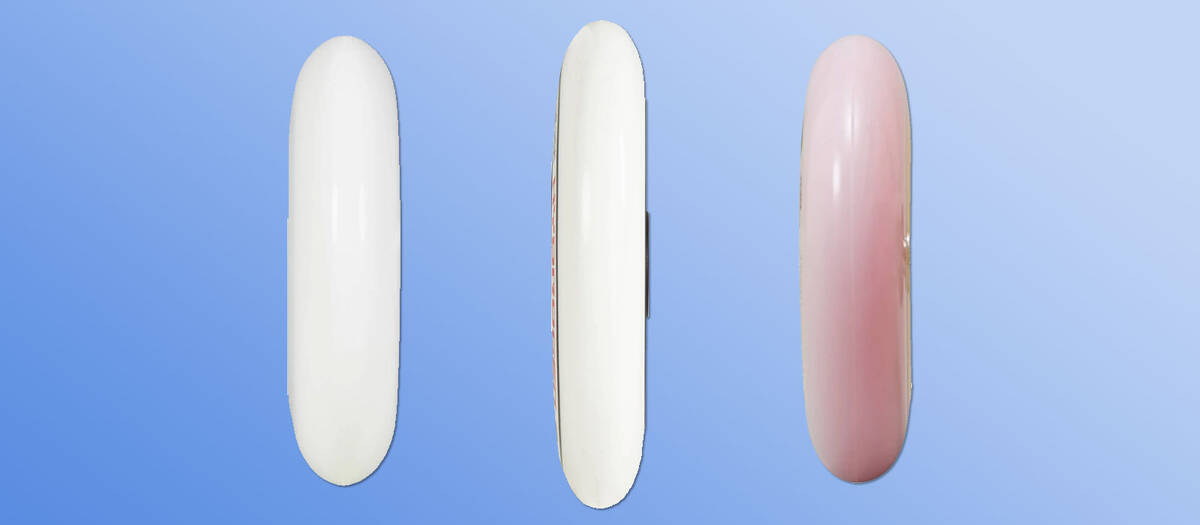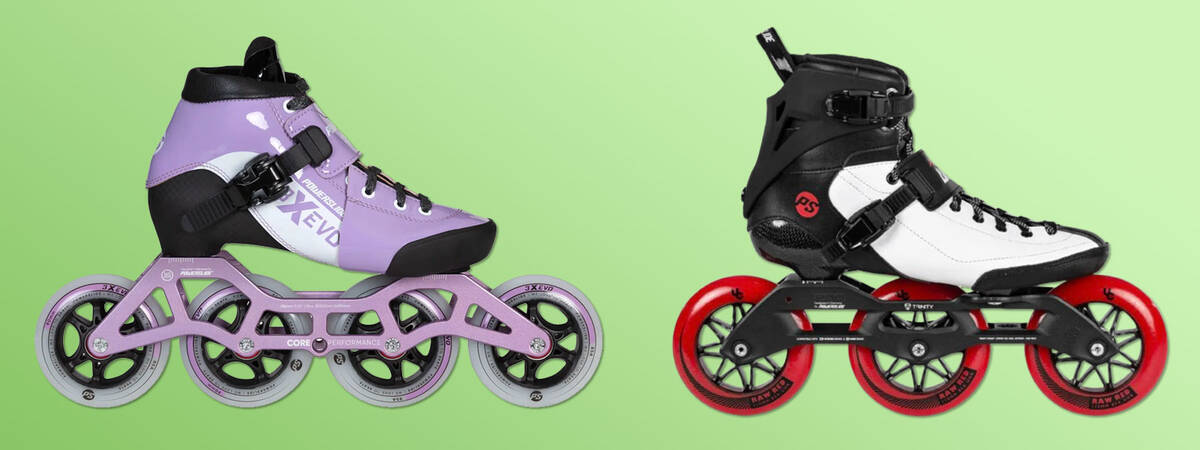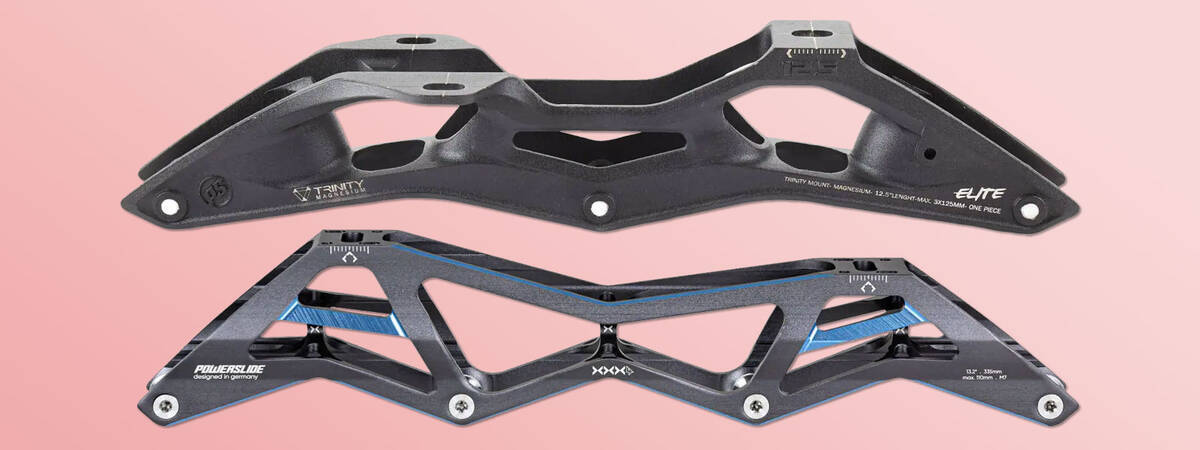Buying Speed Skates
This guide is designed for anyone interested in buying speed skates, with details on wheel size, bearings, boots, and frames. Purchasing the optimal speed skates focuses on performance. No matter your level, whether novice or expert, speed is the essence of speed skates, and this guide will explain how to make them move quickly.
Your personal preferences will naturally be influenced by where and how you skate, but don’t fret; we’ll clarify common inquiries regarding selecting speed skates.
Choosing Wheels for Speed Skates

For maximum speed, you'll require inline skates featuring large wheels. Let's dive into the essentials regarding wheels for speed skates. Wheel size and hardness are the primary considerations, though hubs and the profile of the wheel also influence the skates' performance.
Determining Wheel Size for Speed Skating
Speed skating wheels are generally larger than those used for recreational skating. Here are critical tips on choosing wheel sizes for speed skates:
- 90 mm: Suggested for beginners and younger skaters due to the lower centre of gravity, aiding control.
- 100 mm and 110 mm: Ideal for casual and competitive skaters, delivering greater speed.
- 125 mm: Preferred by marathon skaters for peak speeds over longer distances. These are used in 3-wheel configurations.
In theory and often in practice, larger wheels equate to faster speeds. Beginners might lack the technique for 110 mm or 125 mm wheels, thus smaller wheels may enable better speed. With the necessary skills, however, larger wheels can facilitate higher speeds.
Conversely, smaller wheels allow for quicker acceleration. If short-distance sprints are your focus, it is advisable to avoid 125 mm wheels as they require more time to reach their speed potential.
Note: Indoor or track races typically do not permit 125 mm wheels.
Considering Wheel Hardness for Speed Skating
Speed skating wheels are typically harder than those for recreational or fitness inline skates. The added hardness reduces friction, aiding speed, though it lessens grip and reduces vibration absorption.
When considering your purchase, factor in the environmental conditions you’ll skate in. Will it be on public roads, outdoor rinks, or indoor venues?
- Harder wheels: Provide higher speeds with reduced grip and vibration absorption due to lesser friction.
- Softer wheels: Offer more grip, increased vibration absorption, and more friction.
For indoor or smooth surfaces, harder wheels are recommended. On rough, unpredictable roads, softer wheels are preferable.
Typical hardness for speed skate wheels is around an 85 A durometer.
Understanding Wheel Profile for Speed Skating

The profile of speed skating wheels is often pointy or narrow. This design reduces friction via a narrower contact patch with the surface, enhancing speed.
As wheels wear down, the contact patch increases, moving away from the centre due to the side-to-side action during strides. This is normal, but we advocate rotating the wheels before wear impacts your performance.
How Many Wheels Are on Speed Skates?

In general, inline speed skates feature either 3 or 4 wheels per skate. Historically, 5-wheel configurations gained traction but now, skates predominantly have 3 or 4 wheels.
- 3-wheel models: Known for a shorter wheelbase, offering greater manoeuvrability and agility. They can accommodate larger wheels, reducing exertion at speed. These require advanced technical skills and are not suited for beginners.
- 4-wheel models: With longer wheelbases, they offer more stability but reduced manoeuvrability. Recommended for newcomers.
In competitive realms, 3-wheel setups with 125 mm wheels are used in marathons, while 4-wheel setups with 110 mm wheels are commonly used indoors or on specific tracks.
Frames for Inline Speed Skates

Frames on inline speed skates hold the wheels and are crucial to your setup:
- 3-wheeled or 4-wheeled: Defines wheel quantity on your skates.
- Wheelbase: Measures from the front wheel's centre to the rear wheel's centre.
- Wheel diameter: Determines the largest wheel size compatible with the frame.
The ideal frames are lightweight, often crafted from aluminium or carbon fibre.
- Carbon fibre frames boast rigidity and lightness, offering superior power transfer.
- Aluminium frames tend to be more durable and forgiving.
Aligning Inline Speed Skate Frames
Frame alignment is crucial for all speed skaters prioritising performance. It's not only relevant to upgrades but also worthwhile to consider when acquiring complete skates. Individual preferences might necessitate an alignment different from the default.
Adjusting frame alignment optimises the balance based on your anatomy. Should you struggle with inward ankle tilting, consider a slight lateral adjustment of the frame.
Focus on mounting frames centrally, both laterally and longitudinally.
Lateral frame adjustment:
- The leading wheel should line up between the split of your big and second toes.
- The back wheel should align with the boot heel cup's centre.
Longitudinal frame adjustment:
- The boot should be equidistant in the frame (equal distance from boot tip to frame tip and from boot rear to frame rear).
Discover our complete range here:
Boots for Inline Speed Skates

A critical aspect of speed skate boots is ensuring maximum power transfer. A stiff, snug fit is essential to minimise foot movement within the boot.
Typically, speed skate boots are sans liners for direct power transfer, though this sacrifices comfort. Yet many speed skates intended for endurance events have comfort features, such as liner support for the ankles.
Customising Fit with Heat-Mouldable Speed Skate Boots
Many high-end speed skates have heat-mouldable boots that conform to your feet with heat application. Properly moulded boots prevent pressure points, enhance comfort, and prevent blisters, affording a custom fit for improved control and power transfer, crucial for performance-focused skaters.
Follow manufacturer instructions when heat-moulding your boots.
Assessing Speed Skate Bearings
While selecting speed skates, consider the bearings as they are integral, but they shouldn't dominate your decision. Quality skates generally include decent bearings.
Bearings are often rated on the ABEC scale; a higher rating implies tighter manufacturing precision. The ABEC rating doesn't directly gauge speed but instead measures tolerance for construction errors. Lower-rated bearings may not provide as smooth a ride.
ILQ-rated bearings are also encountered, standing for InLine Qualified, and are robust performers!
It's wise to prioritise brand reputation and user feedback over specifications when selecting bearings for speed skating, as longevity is often considered more crucial than the ABEC rating.
Maintenance and lubrication are vital for bearings, as longevity increases with proper care. Dirt and neglect lead to replacements sooner than later.
